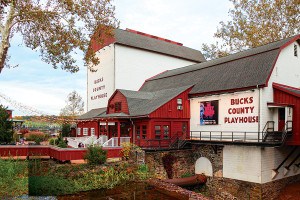Study: Navy Yard One of Most Successful Redevelopment Projects in U.S. History

The Navy Yard | Photo: PIDC
The long-running transformation of The Navy Yard from its shipbuilding past to its present as a growing urban office park has been hailed as one of the “most successful” redevelopment projects in U.S. history by the Urban Land Institute.
The former military base has become home to a host of corporate and regional headquarters, ULI observes in a new article — a location that has attracted more than 150 companies with 12,000 employees.
Oh, and it’s hip, too.
But what really sets the Navy Yard apart from typical office/industrial parks is a sense of place unlike that to be found anywhere else in its region. Upon driving in, a visitor immediately sees magnificent and imposing navy warships—the site remains a reserve basin for retired vessels. Beyond that, there is turn-of-the-20th-century historic architecture along with suburban-style glass office buildings. There is a waterfront plus a park featuring hammocks and Ping-Pong tables. There is the ambience of an academic campus, thanks to buildings with odd shapes, large open spaces, and people walking on sidewalks.
“It’s kind of like a traditional office park, but cooler, and cooler really does matter now,” says Louise Mozingo, chair of the landscape architecture and environmental planning department at the University of California, Berkeley, and author of a 2011 book on office parks, Pastoral Capitalism: A History of Suburban Corporate Landscapes.
ULI notes that 16 years into the redevelopment, work is still ongoing — the next dozen years or so should feature the the addition of another 1.3 million square feet, 10,000 jobs, and 1,000 multifamily residential units.
“The style there is a little edgy and cool,” Jerry Roller, principal of Philadelphia’s JKRP Architects, told ULI. “The world of business is focused on trying to attract the millennials. They’re looking for hip and cool, and the architecture there definitely helps.”
It’s worth reading the whole thing.
Follow @JoelMMathis on Twitter.


